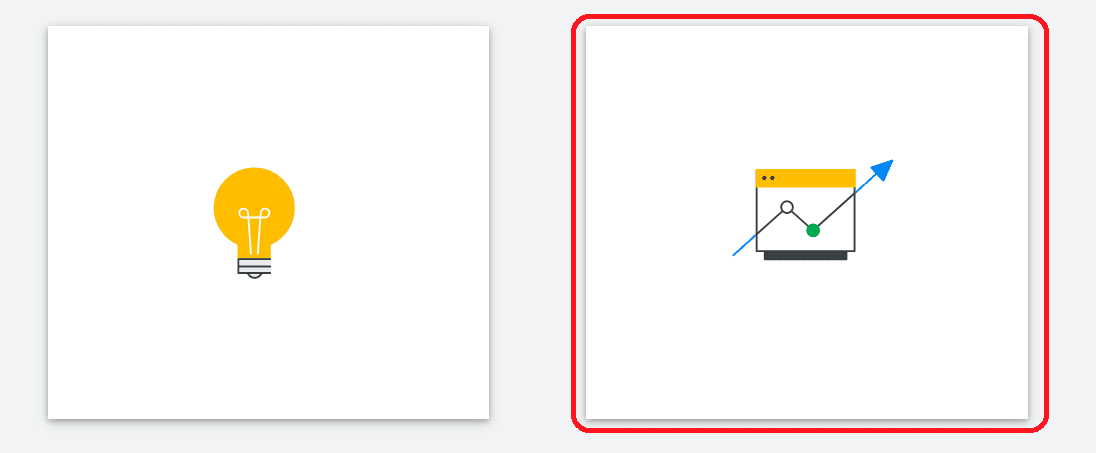Whether you frequently use the Google Ads platform or if you are starting out in the world of online advertising through ads on the search network, you should know what is Google Keyword Planner or also called the Google Keyword Planner.
With Google Keyword Planner you will improve the results of your campaigns thanks to the previous study that this tool allows you to do, being of great help to estimate the costs in our advertising campaigns.
Table of contents
What is Google Keyword Planner
Keyword Planner is the free tool for keyword research that Google makes available to us through its Ads platform.
This tool will allow us to get new ideas about terms or Keywords that we can use for our paid campaigns and it will also offer us very valuable information about the search volume and the minimum bid that we will have to use to appear above the organic search results on the first page.
Discovering new search terms
As we said, one of the facets of this tool is the possibility of searching for keywords that can be useful for our project. To do this, we will start by accessing the tool from the Google Ads configuration section.

Once we access the planner we will be shown two options, in this case, the one that interests us as indicated in the title of this point is the one that refers to discover new words.
Once inside we have the possibility of either putting a url and the platform itself will scan that address and suggest keywords, or we can manually add terms that interest us.

My recommendation is that if you do not know very well what keywords to start with, enter a url address of your interest and once it is analyzed by the platform we will observe the words that it will suggest.
With this step you can get an idea of where the keywords you will have to choose may be heading and then you will be able to pull the thread and discover terms more suitable to your interests or project. Let’s say that it can serve as a clue to later take what we are interested in and go deeper by testing with more and more Longtail Keywords and if possible transactional ones.
Once you have done this, write down on a piece of paper all the ones you are interested in and complete the list with the ones you can think of. Think that these are the terms through which your customers or potential users are going to find your project through the search network. That is to say, they are the words through which users will reach your business or the projects you want to promote
Once this is done in the section marked by default “Start with keywords” we enter our keywords and click on get results. We will access a screen like the following.

From here we can filter options of geographic location and language that interest us and that will change the metrics of each Keyword. The most important data will be both the average monthly searches and the bidding for the top of the page. Through this data we will get an idea of what it may cost us to run a campaign.
The minimum bid will show us, within the selected period, what is the price for which the ads are bidding to appear above the organic ads.
Choosing the important keywords
The wider the Keyword is or in other words, the more generic it is, the more traffic we attract to the web but we have to think if all that traffic is interesting for us.
In our previous search shown in the image, I used the word hairdresser, which is quite generic and projects a monthly search of 246,000. Being such a popular term will bring us traffic of the desired relevance.
The objective is to look for those keywords that will bring us more economic income with a lower investment. These words have the characteristic that they are going to be very specific, generally not very popular and the bids for the top if a good study is done, most likely will not be very expensive to get.
These well-defined searches that bring us relevant traffic and interested in what we offer in our business, gives us high CTR rates, ie the number of clicks received per 100 impressions of our ads, will be high.
Keyword matching in the Keyword Planner
The type of concordance we choose to enter our keywords will have a great influence on the results we obtain in the estimates. The wider the match, the higher the costs will be and the more traffic it will bring.
On the other hand, if it is a closer match, we will get less traffic, but it will be more relevant. Choosing one or the other will depend on our strategy and our budget.
We have the following types of concordance:
- Broad match:
This concordance includes relevant variations with respect to the term written as a keyword. It is the concordance that will bring the most traffic.
- Broad Modified:
Here the order of the terms is indifferent. It includes variations but not synonyms. It also attracts quite a lot of traffic which we may find uninteresting.
- Phrase match:
In this type of concordance the match with the keyword has to be exact and in the same order. It attracts less traffic but the level of relevance of the traffic will be much higher.
- Exact match:
Here there is only a chance that the user doing the search will type it exactly the same. Therefore, the traffic will be much more relevant even if we can leave some users along the way that we could have impacted with our ad and that could have been really interested in it.
Types of Keywords according to their length
To help us understand a little better the influence of keywords when it comes to achieving our goals, and that they yield one or another result in the Keyword Planner, we are going to distinguish between 3 types:
- Short Tail:
Here we are talking about very generic words, usually one term and that acquire a lot of search volume, which as we said before is usually not very relevant traffic. An example would be for example to search for the word t-shirts, if we wanted to sell t-shirts this term would not be of great help unless the investment was very large.
- Middel Tail:
Here the visits will continue to be generic, although the traffic may not be as large as in the previous case. An example would be “Women’s T-shirts”
- Long Tail:
Long tails are more interesting for us. They have less traffic but they also have less competition. It points more directly to what we want to offer in the market from our business project and will connect us with interested users.
Study of search volumes and forecasts
In this section we will discover how much search volume the plan we have made will generate and how much it will cost to achieve it, without forgetting the most important thing, the coveted conversions, and the platform will let us add the conversion metrics of our project.
Once we know which keywords to use for our advertising campaign, we will go back and enter the section called “Check the volume of searches and forecasts”. Once we click on it, a screen like the following image will appear.

Here we will enter all our keywords either by hand or through an external file and click start.
In the next step the keyword planner shows us all the necessary data to know if our campaign is viable or not. Adding the conversion metrics, we will observe how much is the price we will have to pay to get a certain number of clicks and how many of these clicks will end up being a conversion.
We will then be able to do the calculations of how much is the CPA or cost per acquisition.
In the example shown in the image above, only with the word hairdresser is providing us with information about the cost of that Keyword, the clicks that I will get and the CTR.
Depending on this information we will see the viability of the project. If we achieve our goals or on the contrary we have to make a greater investment or incorporate other keywords.
Audience segmentation
Another of the features that we can configure when using the Keyword Planner will be the segmentations.
Depending on our objectives and in order to optimize the campaign to the maximum so that the estimates in the Keyword Planner are as real as possible, we have a series of options to modify that we can carry out.
- Search networks
Here we have the possibility of choosing between the Google search network or also including Google Maps, Google Shopping, etc. partners. The best thing to do in this aspect to avoid distorting the metrics is to separate the campaigns and focus only on the search campaign for example and if later we want to do another mixed campaign we can recalculate.
- Location
This refers to the geographic location where we are going to launch the campaign. Of course if we change locations our metrics will change.
- Language
It is the language that users will use when searching in Google.
Create the Campaigns from the Keyword Planner
If you have already chosen all the keywords of your interest and with the corresponding concordances that you choose according to your strategy, and you have segmented taking into account where the campaign will be launched, there is only one last thing left to do to get the campaigns rolling.
Group your keywords in ad groups.

In the menu on the left side, from the Ad Group tab, you will be able to create the groups you need and organize your chosen keywords by similarity.
This will ensure that when creating the ads, the keywords in each group are related to their respective ads. In addition, the more related the keywords in each group are, the higher the quality Google will give us, with the consequent reduction in the cost of bids.

When you have everything grouped together, click on create campaign and you will have the whole process completed from the Keyword Planner. You only have to give a name to the campaign and assign a daily budget.
Conclusions
As we have seen, this tool is essential to be able to make a forecast of the viability of a Google Ads campaign. Thanks to it we know the amount of conversions or clicks, depending on how the lead is set, that we are going to get with a given budget.
It will not help us to dismiss a campaign that in principle we could think that it was the right one, avoiding unnecessary expenses in Ads and that we can allocate to other items.
As for its configuration, it does not require a great complexity since the most important thing is the time we devote to make a good Keyword Research. If you are interested in how to make a good Keyword Reseach in this article you will find it.
And as we always say, any questions you have about this or other areas of an Ecommerce, you can contact us through the form and we will be happy to assist you.
Related Posts










Deja un comentario